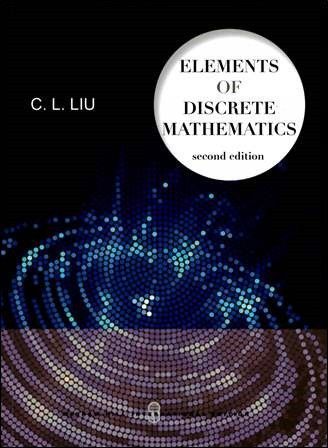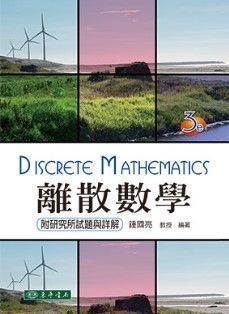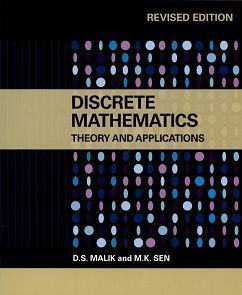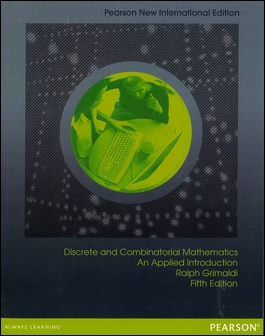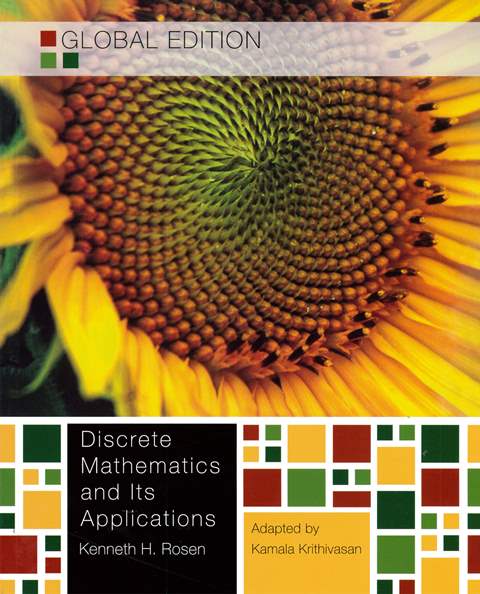書籍分類
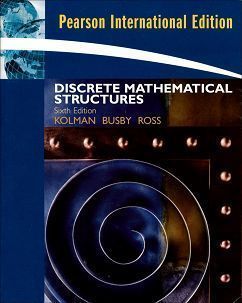
Discrete Mathematical Structures 6/e
作者:Bernard Kolman, Robert Busby, Sharon C. Ross
原價:NT$ 1,150
ISBN:9780132078450
版次:6
年份:2008
出版商:Pearson Education
頁數/規格:556頁/平裝雙色
版次:6
年份:2008
出版商:Pearson Education
頁數/規格:556頁/平裝雙色
內容介紹 本書特色 目錄 作者介紹
- Description
Discrete Mathematical Structures, Sixth Edition, offers a clear and concise presentation of the fundamental concepts of discrete mathematics. Ideal for a one-semester introductory course, this text contains more genuine computer science applications than any other text in the field.
This book is written at an appropriate level for a wide variety of majors and non-majors, and assumes a college algebra course as a prerequisite.
- Features
- The focus on computer science prepares students for future computer science careers.
- The emphasis on proof lays the foundation for mathematical thinking.
- Clear organization of topics prevents students from being overwhelmed. The authors treat relations and digraphs as two aspects of the same fundamental idea, which is then used as the basis of virtually all the concepts introduced in the book.
- Vignettes of mathematical history open each chapter, providing students with a practical background of how these ideas were developed.
- Additional number theory coverage provides more information on the properties of integers, including base n representations, and gives more contexts for isomorphism.
- Cryptology is explored throughout the book, introducing students to this exciting field.
- Coverage of coding provides students with a full picture of all of its aspects, including efficiency, effectiveness, and security. A set of coding exercises for each chapter is also included in Appendix C.
- Exercises emphasize multiple representations of concepts, and provide practice on reading and writing mathematical proofs.
- Experiments provide opportunities for in-depth exploration and discovery, as well as for writing and for working in groups. Topics include weighted voting systems, Petri nets, Catalan numbers, and others.
- End-of-chapter material includes Tips for Proofs, a summary of Key Ideas, and a Self-Test, which contains a set of conceptual review questions to help students identify and synthesize the main ideas of each chapter.
- New sections on Logic, Mathematical Statements, and Logic and Problem Solving help students understand proofs and proof techniques. Additional exercises help students develop conjectures and how to prove or disprove them.
- More applications, exercises, and figures have been added to help students learn and retain the material.
- New material on fuzzy sets and fuzzy logic introduces students to a topic that is extremely important for modern issues of automated feedback and control of processes.
- Popular puzzles like Sudoku and their underlying mathematical connections form a continuous thread in the text, connecting set theory, Boolean matrices, algorithms and coding, logic, the general construction of proofs, coloring problems and polynomials, and other topics in a way that students will find both interesting and instructive.
New to This Edition
- Table of Contents
1. Fundamentals
2. Logic
3. Counting
4. Relations and Digraphs
5. Functions
6. Order Relations and Structures
7. Trees
8. Topics in Graph Theory
9. Semigroups and Groups
10. Languages and Finite-State Machines
11. Groups and Coding
- Bernard Kolman received his BS in mathematics and physics from Brooklyn College in 1954, his ScM from Brown University in 1956, and his PhD from the University of Pennsylvania in 1965, all in mathematics. He has worked as a mathematician for the US Navy and IBM. He has been a member of the mathematics department at Drexel University since 1964, and has served as Acting Head of the department. His research activities have included Lie algebra and perations research. He belongs to a number of professional associations and is a member of Phi Beta Kappa, Pi Mu Epsilon, and Sigma Xi.
Robert C. Busby received his BS in physics from Drexel University in 1963, his AM in 1964 and PhD in 1966, both in mathematics from the University of Pennsylvania. He has served as a faculty member of the mathematics department at Drexel since 1969. He has consulted in applied mathematics and industry and government, including three years as a consultant to the Office of Emergency Preparedness, Executive Office of the President, specializing in applications of mathematics to economic problems. He has written a number of books and research papers on operator algebra, group representations, operator continued fractions, and the applications of probability and statistics to mathematical demography.
Sharon Cutler Ross received a SB in mathematics from the Massachusetts Institute of Technology in 1965, an MAT in secondary mathematics from Harvard University in 1966, and a PhD in mathematics from Emory University in 1976. She has taught junior high, high school, and college mathematics, and has taught computer science at the collegiate level. She has been a member of the mathematics department at DeKalb College. Her current professional interests are in undergraduate mathematics education and alternative forms of assessment. Her interests and associations include the Mathematical Association of America, the American Mathematical Association of Two-Year Colleges, and UME Trends. She is a member of Sigma Xi and other organizations.



